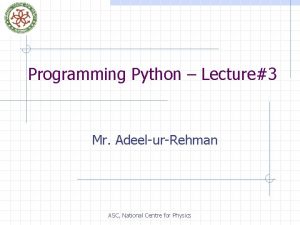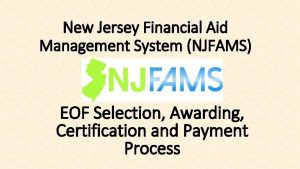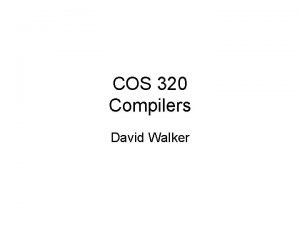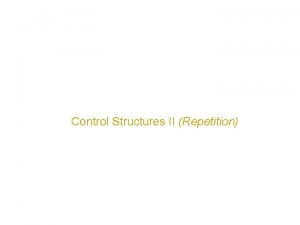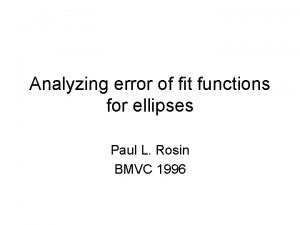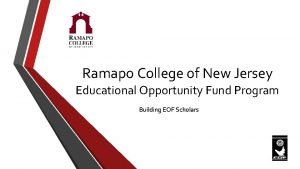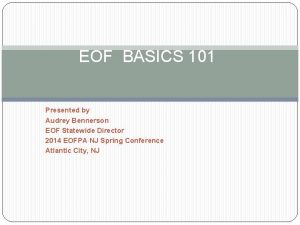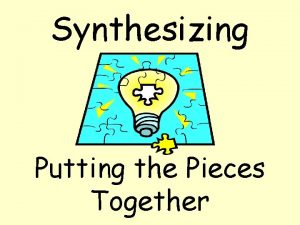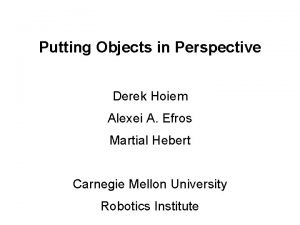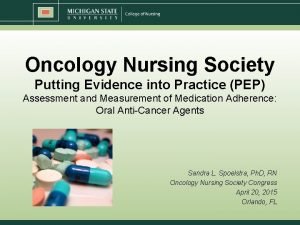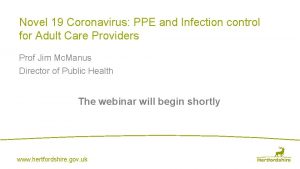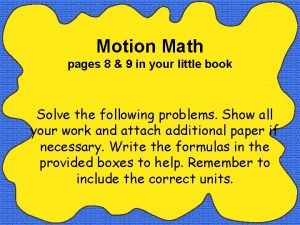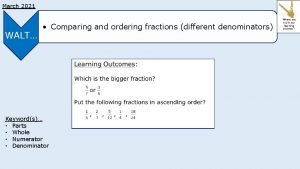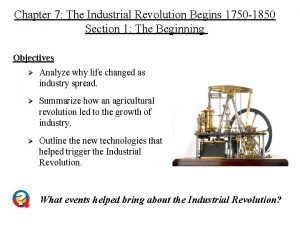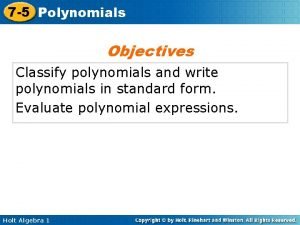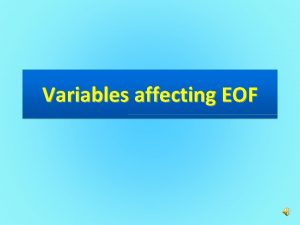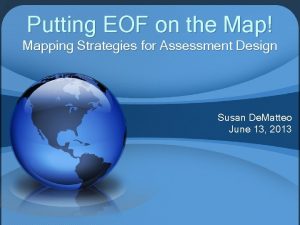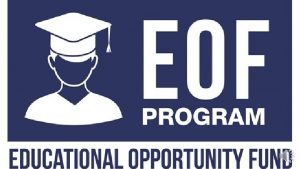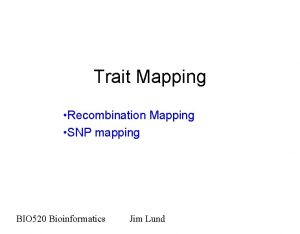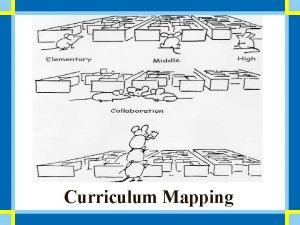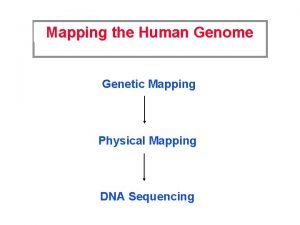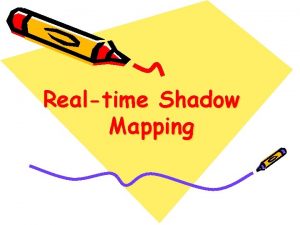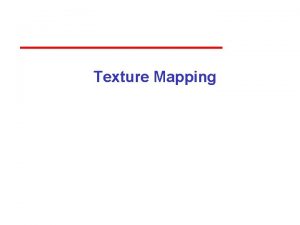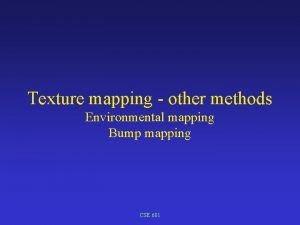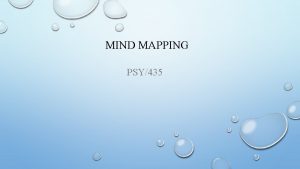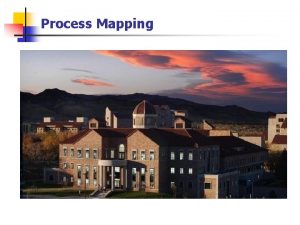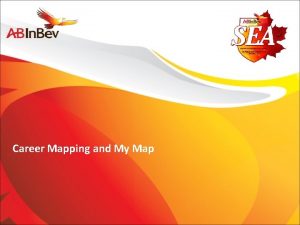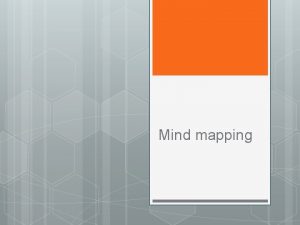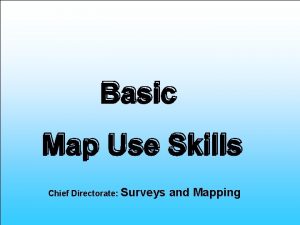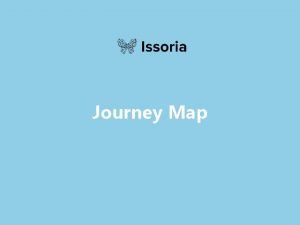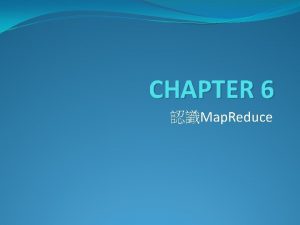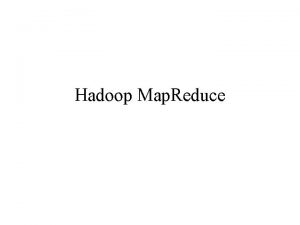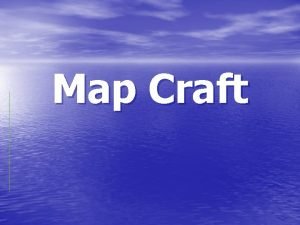Putting EOF on the Map Mapping Strategies for







![New Student Orientation EOF Outcome: [Learning Domain: Cognitive complexity; Reflective thinking] “Applies previously understood New Student Orientation EOF Outcome: [Learning Domain: Cognitive complexity; Reflective thinking] “Applies previously understood](https://slidetodoc.com/presentation_image_h/93ecb390a683c47e599476745f3c14f7/image-8.jpg)
















- Slides: 24

Putting EOF on the Map! Mapping Strategies for Assessment Design Susan De. Matteo June 13, 2013

Agenda ü Develop student outcomes. ü Identify EOF service components that support them. ü Align student outcomes to EOF service components.

Agenda ü Determine appropriate assessment measures. ü Develop a long-term assessment plan.

What is Program Mapping? A process for showing outcomesintegration at the program and service levels to determine whether all students in the program are getting sufficient opportunities to achieve all intended learning and success outcomes.

What is Program Mapping? Its purpose is to identify any areas in the program that are not being adequately and/or consistently delivered to all students and to assist service providers in making the necessary changes to the program as a result of the information obtained in the map.

What is Program Mapping? • Table Format • Communicate the history of program assessment

Service A Service B Service C Service D Service E Outcome 1 Outcome 2 Outcome 3 Outcome 4 Outcome 5
![New Student Orientation EOF Outcome Learning Domain Cognitive complexity Reflective thinking Applies previously understood New Student Orientation EOF Outcome: [Learning Domain: Cognitive complexity; Reflective thinking] “Applies previously understood](https://slidetodoc.com/presentation_image_h/93ecb390a683c47e599476745f3c14f7/image-8.jpg)
New Student Orientation EOF Outcome: [Learning Domain: Cognitive complexity; Reflective thinking] “Applies previously understood information, concepts, and experiences to a new situation or setting; rethinks previous assumptions” (CAS Learning & Development Outcomes, 2008, p. 2) Student Learning Outcome: Distinguish between high school and college expectations. Direct Measure #2: FYE Survey administered at the end of the semester. Data is collected each semester and analyzed every two years. Last assessed - Spring 2012. Next assessment – Spring 2014.

Service A Service B Service C Service D Service E Outcome 1 X X Outcome 2 Outcome 3 X X Outcome 4 Outcome 5 X X

OPPORTUNITY FOR A NEW MILLENNIUM: EOF Planning Report (1997) “Each institution must develop broad long term (3 -5 year) goals and desired outcomes for its EOF Program”

EOF: CAS Standards http: //www. cas. edu/index. php/standards/

Outcomes EOF Guiding Principles: Promoting access § Preserve college affordability

Outcomes Promoting student success § Provide early intervention, including greater articulation and collaboration with the K-12 community and pre-college programs. § Connect education with the world of work. § Prepare EOF students for majors in which they are under-represented. § Close the outcomes gap between EOF students and others.

Outcomes Enhancing quality § Collaborate with faculty and academic administrators to promote student learning for under-represented students. § Advocate for under-represented students to faculty and academic administrators to promote student learning.

Outcomes Maintaining accountability § Demonstrate the achievement of student outcomes to internal and external stakeholders.

Delivery of Outcomes EOF Service Components

Alignment Outcomes to Services

Alignment Consideration Is every learning outcome supported by your services? If not, why? Is it central to your mission? Does everything you do support your learning outcomes? If not, why? What’s missing?

Long-term planning Determine your assessment cycle. Can everything be assessed over five years? How many years between data collections?

Long-term planning Determine opportunities for assessment. Are there assessments naturally occurring at regular intervals? If not, where and when do measures seem the most feasible to implement?

Long-term planning Determine required resources. Who is empowered to make decisions on action items, timelines, and responsible parties? What resources will you need (e. g. financial, staff, time, facilities, technology, etc…)

Discussion

E-Mail Susan De. Matteo susandematteo 123@comcast. net

References Opportunity For A New Millennium: EOF Planning Report (1997). New Jersey Commission on Higher Education. Retrieved online. Middaugh, Michael, F. (2010). Planning and Assessment in Higher Education: Demonstrating Institutional Effectiveness. San Francisco, CA: Jossey-Bass. Student Learning Assessment—Options and Resources. (2 nd ed. 2007). Philadelphia: Middle States Commission on Higher Education, pp. 27 -53. Student Learning Outcomes Plan—A Culture of Assessment, September 2007. Walvoord, B. E. , & Anderson, V. J. (1998). Effective grading. San Francisco, CA: Jossey-Bass.
 Eof error python
Eof error python What is njfams
What is njfams Eof
Eof Repetition structure in c++
Repetition structure in c++ Eof
Eof New jersey educational opportunity fund
New jersey educational opportunity fund Eof 101 housing
Eof 101 housing The associative mapping is costlier than direct mapping.
The associative mapping is costlier than direct mapping. Forward mapping vs backward mapping
Forward mapping vs backward mapping Transform mapping dan transaction mapping
Transform mapping dan transaction mapping Putting-out system
Putting-out system What is nasreen putting chocolate on
What is nasreen putting chocolate on Putting-out system
Putting-out system Putting-out system
Putting-out system Putting all the pieces together
Putting all the pieces together Physical and non-physical rate fences
Physical and non-physical rate fences Putting objects in perspective
Putting objects in perspective Putting evidence into practice
Putting evidence into practice The order of putting on ppe
The order of putting on ppe Putting it all together motion answer key
Putting it all together motion answer key Comparing fractions with different denominators
Comparing fractions with different denominators Putting people first 2007
Putting people first 2007 Putting-out system
Putting-out system Classify polynomials
Classify polynomials Putting the enterprise into the enterprise system
Putting the enterprise into the enterprise system
